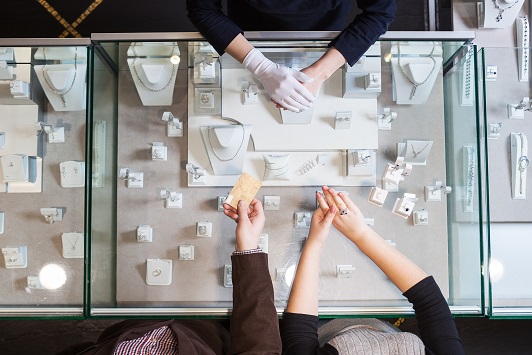
Elongated fancies are still trending, but rounds are in a category of their own when it comes to the top-selling cut for bridal. While sales may not match those of 2021, couples are always getting engaged — a fact that’s tempering concerns about the economy.
New York: Stable and selling
“It’s all about having the right inventory,” says Abe Fastag, vice president of New York-based wholesaler Ideal Brilliant Co. “The percentage of making a sale when a serious call comes in is as high as it ever was because goods are scarce — and that applies to bridal as well.”
He has found that “rounds are always in demand. Fancies do quite well because they offer customers a way to create a more unique look.” While ovals sell well, he sees strong interest in nice marquises, followed to a lesser extent by pear shapes.
Based on his sales, the average center stone is generally from 1.25 to 1.75 carats, with prices usually ranging from $5,000 to $15,000. Most of the diamonds are VS and SI clarity. He only sells D to J colors.
Furthermore, while diamond prices have gone up, the increases are not on par with the 30%-plus hikes for other luxury goods like handbags and shoes.
From that perspective, Fastag believes the diamond industry is more stable. “If diamond prices had gone up that high, then I’d say we were in trouble,” he says. He takes the positive viewpoint that bridal will remain strong.
“We get a feel for what is happening in the retail market very quickly,” he adds. “We’re all interconnected now.”
Chicago: Push to pear shapes
“Ovals are so hot; they’ve been a huge trend for almost four years. We call them the new princess cut,” says Aaron Goynshor, marketing director at wholesaler United Gem Ltd. in Chicago. “We’re seeing strong demand for elongated radiants, as well as a little push toward pear-shaped diamonds.”
Goynshor also cites yellow gold as a “big trend,” especially for finished bridal rings. In wholesale dollars, the average ring falls into the $5,000 to $15,000 range for a 1- to 2-carat center stone. He reports good demand for 0.80 and 0.90 carats, as well as larger stones in the 2.50- to 3-carat range. Popular colors include G, H and “sometimes I.” Clarity rarely falls below SI2, he says; 80% of requested diamonds are generally between that and SI1.
Still, Goynshor is concerned about a “perfect storm” of rising diamond prices, a limited ability to source nice makes in bread-and-butter goods, and the threat of recession that is at the “back of everyone’s mind.” He anticipates that holiday unit sales will remain the same as in 2021, but the average price per unit may decline. He also believes brick-and-mortar retailers will play a larger role in driving sales because of the added-value services they provide.
He discounts the “gloom and doom” predictions that the retail store is dead and all sales are shifting online. “Many local jewelry stores are doing better than ever. Diamonds are one of the few products not becoming ‘Amazonified’ and totally relegated to the virtual world.”
Los Angeles: Demand for GIA-graded
“Emerald cuts and ovals are seeing the most action,” says Raffi Donikian, owner of wholesaler LA Diamond Supply in Los Angeles. Radiants complete the trio of top sellers, he adds, and rounds — despite their historical standing as the perennial favorite — have been “underperforming.”
The average center stone sale he sees is 1.50 carats, with a wholesale price ranging from $5,000 to $15,000. Most consumers who want Gemological Institute of America (GIA) grading are “leaning toward H-plus” in terms of color. G, SI1 stones represent the “nice, middle-of-the-road, GIA-graded category,” he says, though he also receives calls for the lower J to K colors.
He is experiencing problems in sourcing; specific premium sizes of 1.30, 1.70 and 2.50 carats are “very much in short supply,” he reports.
The current high cost of rough is “not completely outrageous,” he says, “but rather keeping pace with inflation, or maybe outpacing it by a little bit.” He views it as “something that we all have to get used to.”
The engagement market should continue its strong trend, Donikian predicts, though he anticipates that holiday sales will “not be as good as last year.” He is concerned about a potential recession in the fall that has consumers worried.
When it comes to supply scarcities, though, he opts for ethics over ease of doing business. “I know a lot of people on the dealer side are complaining about the shortage of rough from Russia, but it’s well warranted. I’m okay with it even if it hits our pocketbooks, because it pales in comparison to what people are going through in Ukraine.”
Image: ShutterstockArticle from the Rapaport Magazine - September 2022. To subscribe click here.